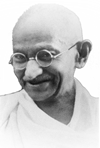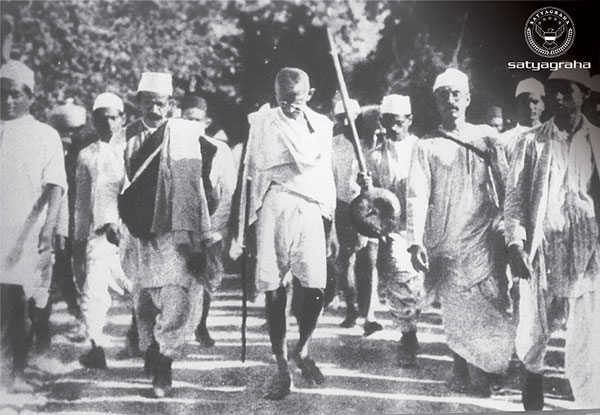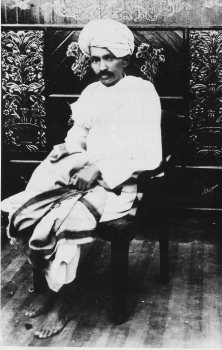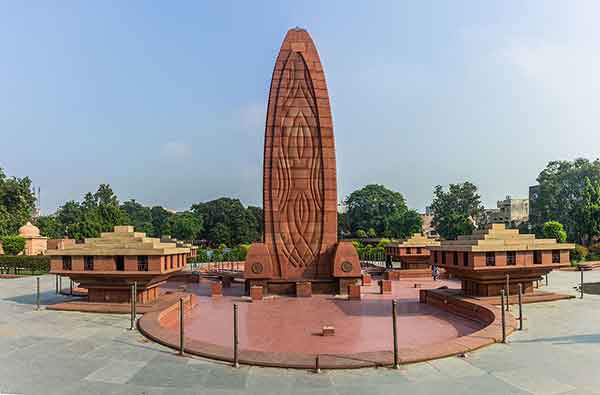Nationalism in India
Digital Timeline: From Gandhiji’s arrival to India from South Africa to Independence.
Click the following link
Watch video tutorial on crating digital timeline with Tiki-toki
PDF of the lesson : Nationalism in India
The First World War and its effect on India.
- World War I led to significant economic and political changes. The government had to spend more on defense, which increased the financial deficit. To cover this deficit, measures like raising taxes on imports (customs duties), introducing income taxes, and borrowing heavily were taken.
- During the war years from 1913 to 1918, prices doubled, causing extreme hardship for common people as their purchasing power decreased.
- Villages were required to provide soldiers for the war. Forced recruitment of villagers led to widespread anger and resentment in rural areas.
Other hardships
- In 1918-19 and 1920-21, crops failed in many parts of India, resulting in acute shortages of food.
- There was an influenza epidemic. According to the census of 1921, 12 to 13 million people perished as a result of famines and the epidemic.
- People hoped that their hardships would end after the war was over. But that did not happen.
Freedom struggle under the leadership of Mahatma Gandhiji
1916The Idea of Satyagraha
- The idea of Satyagraha emphasised the power of truth and the need to search for truth. It suggested that if the cause was true, if the struggle was against injustice, then physical force was not necessary to fight the oppressor. Without seeking vengeance or being aggressive, a satyagrahi could win the battle through nonviolence.
- This could be done by appealing to the conscience of the oppressor. People – including the oppressors – had to be persuaded to see the truth, instead of being forced to accept truth through the use of violence.
- By this struggle, truth was bound to ultimately triumph. Mahatma Gandhi believed that this dharma of non-violence could unite all Indians.
The Early Success
Rowlatt Satyagraha
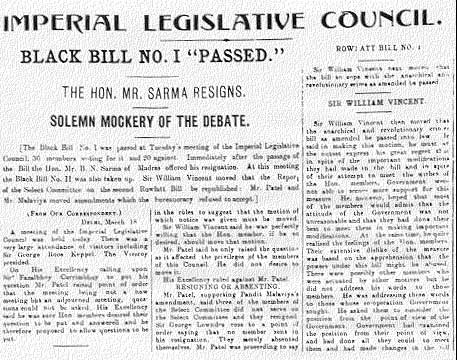
Rowlatt Act
- This Act had been hurriedly passed through the Imperial Legislative Council despite the united opposition of the Indian members.
- It gave the government enormous powers to repress political activities.
- The British could arrest any political activist without any trial for two years.
- Gandhiji in 1919 decided to launch a nationwide Satyagraha against the proposed Rowlatt Act (1919).
- Mahatma Gandhi wanted non-violent civil disobedience against such unjust laws, which would start with a hartal on 6 April.
- Rallies were organised in various cities, workers went on strike in railway workshops, and shops closed down.
- Alarmed by the popular upsurge, and scared that lines of communication such as the railways and telegraph would be disrupted, the British administration decided to clamp down on nationalists.
- Local leaders were picked up from Amritsar, and Mahatma Gandhi was barred from entering Delhi.
Jallianwallah Bagh Massacre
- On 10 April, the police in Amritsar fired upon a peaceful procession, provoking widespread attacks on banks, post offices and railway stations. Martial law was imposed, and General Dyer took command.
- On 13 April the infamous Jallianwallah Bagh incident took place. On that day a crowd of villagers who had come to Amritsar to attend a fair gathered in the enclosed ground of Jallianwallah Bagh.
- Being from outside the city, they were unaware of the martial law that had been imposed.
- Dyer entered the area, blocked the exit points, and opened fire on the crowd, killing hundreds. His object, as he declared later, was to ‘produce a moral effect’, to create in the minds of satyagrahis a feeling of terror and awe.
The Aftermath
- As the news of Jallianwallah Bagh spread, crowds took to the streets in many north Indian towns. There were strikes, clashes with the police and attacks on government buildings.
- The government responded with brutal repression, seeking to humiliate and terrorise people: satyagrahis were forced to rub their noses on the ground, crawl on the streets, and do salaam (salute) to all sahibs; people were flogged and villages were bombed.
Seeing violence spread, Mahatma Gandhi called off the movement
Need for Wider Movement
- Rowlatt Satyagraha was widespread but was limited to towns and cities.
- Villagers and Muslims did not participate in large numbers.
- Turkey was defeated by the British in the First World war.
- Khalifa was not not only the emperor of Turkey but also the religious head of Muslims
- A romour spread that Khalifa’s religious powers would be taken away.
- There was widespread anger amongst Indian Muslims.
- Muhmed Ali and Shoukat Ali began discussing with Gandhi, the possibility of merging Khilafat Movement with that of proposed Non-Cooperation Movment.
- After intense debate and discussion, Gandhi was able to convince the other Congress leaders the need to merge the two movments.
Non-Cooperation Movment – Why and How was it planned?
- Gandhiji had written in Hind Swaraj (1905), that the British could rule India only because of the cooperation extended by them.
- If Indians stopped cooperating with the British, Swaraj would come within a year.
- It should begin with the surrender of titles that the government awarded, and a boycott of civil services, army, police, courts and legislative councils, schools, and foreign goods. Then, in case the government used repression, a full civil disobedience campaign would be launched.
Different Strands of the Movment
What did ‘Swaraj’ mean to different Social Groups?
Middle Class People of Towns and Cities : For these people, Swaraj meant Political Freedom
Peasants of Awadh : For these people, Swaraj meant abolition of Begar, social respect and reduction of land revenue.
Tribals of Gudem Hills of Andhra Pradesh: For these people, Swaraj meant free access to forest and forest products and restoration of their traditonal ways of life.
Plantation workers of Assam: For these people, Swaraj meant free movement in and out of plantations and re-establishing connection with their native places.
How did these Social Groups participate in the Movement?
Middle Class People of Towns and Cities
- Thousands of teachers and students boycotted schools and colleges.
- Lawyers boycotted courts
- Foreign goods were boycotted and set on bonfire
- Council elections were boycotted by all parties except Justice Party.
- Traders and merchants refused to trade foreign goods or finance foreign trade
- Import of foreign cloth declined from 102 crores to 57 crores between 1921 and 1922
- People discarded foreign cloth and began to use Swadeshi goods.
- Movement slowed down for three reasons.
- One – Alternative Indian educational instituttions were few and very slow to come up. Teachers and students went back to schools and colleges.
- Kahdi was costly. Poor people began to buy cheap machine made Manchester goods.
- Lawyers also went back to law courts.
Peasants of Awadh
- Baba Ramachandra led the Peasants movement in Awadh.
- The condition of farmers was pitiable.
- Most of them were tenents of big landlords.
- They had to pay very high rent and various other cesses
- They were forced to do begar (work without pay)
- They had no social respect were asked to vacate the land frequently so that they could not claim ownership of the land that they tilled.
- They had organised ‘Nayi-Dhobi Bandh’ – a movemnet depriving the landlords of the services of barbers and washermen.
- Nehru and Baba Ramachandra toured Awadh extensively mobilising the support of famers for the Non-Cooperation movement.
- The intension was to merge the Peasants’ movement with Non-Cooperation movement.
- They established Awadh Kisan Sabha. Soon it had more than 300 branches.
- When Non-Cooperation movement was launched, the farmers didn’t act in the way Gandhiji expected.
- They looted bazars, took control of grain hoardings, attacked Talukdars and Zamindars, local leaders in many areas told the farmers that Gandhiji had asked them not pay tax and the land would be redistributed.
Tribals of Gudem Hills of Andhra Pradesh
- Large tracks of forests were enclosed by the British in many places including the Gudem Hills of Andhra Pradesh.
- The tribals couldn’t take their cattle to graze or collect fuel woood and fruits and other forest products.
- They lost their traditional way of life.
- Alluri Sitaram Raju led the tribals movement.
- He was a very interesting person. He claimed that he could make accurate astrological predictions and withstand even bullet shots.
- He encouraged tribals to wear Khadi and give up drinking alcohol but he also encouraged them to take to guerilla war to kill British officers.
- The tribals tried to kill British officers.
- Alluri Sitaram Raju was arrested and executed in 1924.
Plantation workers of Assam
- Large number of migrant workers were there in large Tea plantation.
- They were not allowed to move out of plantations.
- Under the Inland Emigration Act of 1859, plantation workers were not permitted to leave the tea gardens without permission, and in fact they were rarely given such permission.
- When they heard of Non-Cooperation Movement, thousands of them defied the authorities and headed for home.
- They were left stranded in the Railway stations and dockyards as the workers in these palces were on strike.
- They were rounded up, beaten up brutally and sent back to plantations.
Calling off Non-Cooperation Movemnet
- In Chaura Chouri, police allowed the protest march of the Satyahrahis to pass by the Police Station and fired on the Satyagrahis from behind.
- The enraged Satyagrahis turned back and attacked the Police.
- Fearing for life, police shut themselves in the Police Station.
- The Police Station was set on fire.
- Around 21-22 policemen were charred to death.
- Pained by such a violence, Gandhiji withdrew Non-Cooperation Movement.
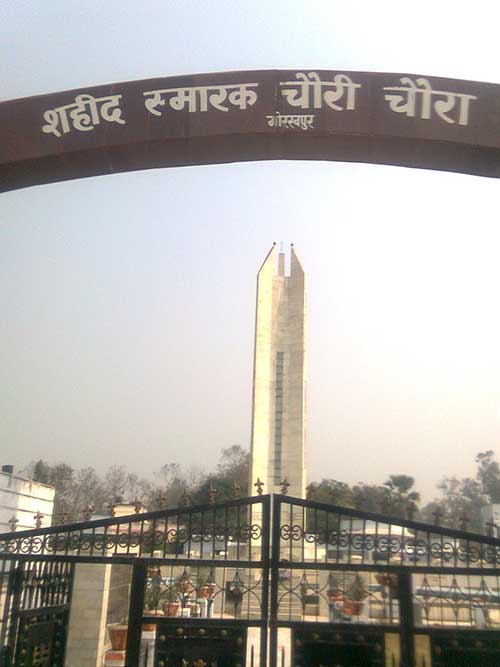
Events that unfolded between Non-Cooperation Movement and Civil Disobedience Movement
Swaraj Party
- Leaders like Motilal Nehru and C.R. Das were fed up with Mass Struggles and wanted to contest council elections.
- They formed ‘Swaraj Party’ within Congress.
- The objectives were a) oppose British policies within councils b) Argue for reforms c) Show the world that the British administration was not democratic at all.
- Young leaders like Jawaharlal Nehru and Subash Chandra Bose, however, were for mass struggle.
Effects of Great Depression
- Agricultural prices began to decline from 1926 and collapsed after 1930.
- Export of agricultural products stopped and the domestic market observed sharp fall in demand.
- The farmers just couldn’t sell their crops.
- The entire country side was in turmail
Simon Commission/Go Back Simon agitation
- In order to study the Indian constitution and suggest changes, the Tory govt. appointed Simon Commission.
- The commission had only European members; not even a single Indian was in the commission.
- The Simon Commission when arrived at Bombay in 1928, was greeted with the slogan, ‘Go back Simon’.
- All parties including the INC and Muslim League supported this agitation.
Irwin’s proposal of Dominion Status
- In order to win over Indians, Lord Irwin, announced in October 1929 that India would be given ‘Dominion Status’ in unspecified future and a Round Table conference to discuss the future Indian Constitution.
- This was at once rejected by young Congress leaders.
- Theliberals and moderates in the Congress were losing their influence and the young radical leaders like Jawaharlal Nehru and Subash Chandra Bose were becoming more and more influential within Congress.
Poorna Swaraj resolution
- The INC session of 1929 was held at Lahore and Jawaharlal Nehru was the president.
- The session passed the resolution of ‘Poorna Swaraj’ (Complete Freedom).
- It was decided that 26 January 1930 would be celebrated as Independence Day.
- However, this celebration attracted very little attention of the Indians.
- Again the onus fell on Ganhiji to keep the Nationalist movement going. He needed to help people relate their everyday problem with the abstract idea of ‘Swaraj’. Hence the Civil Disobedience Movement.

